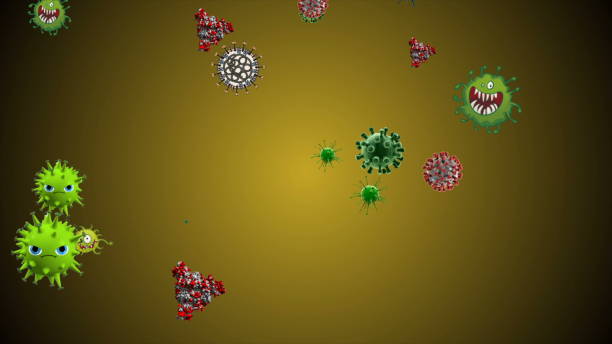What Kills Norovirus Besides Bleach?
Norovirus is among the most common contagious viruses responsible for stomach-related illnesses such as gastroenteritis. It spreads quickly through contaminated food, water, or surfaces, causing symptoms like vomiting, diarrhea, and stomach cramps. Given its contagious nature, cleaning and disinfecting surfaces that may harbor the virus is crucial in preventing outbreaks, especially in hospitals, schools, cruise ships, and restaurants. While bleach is widely regarded as an effective disinfectant against norovirus, many seek alternatives. So, what kills norovirus besides bleach?
This article explores various substances and methods that can effectively neutralize the virus, offering viable options for those seeking alternatives to traditional bleach-based cleaners.
1. Alcohol-Based Hand Sanitizers (with at least 60% Alcohol)
Alcohol-based hand sanitizers, particularly those with a concentration of 60% or more alcohol, are effective at reducing the transmission of norovirus, though they don’t kill it as effectively as bleach. Studies have shown that alcohol-based sanitizers can kill many pathogens, including some viruses, but they are not as efficient at killing norovirus as other viruses like influenza or the common cold. However, when soap and water aren’t available, using an alcohol-based hand sanitizer can still help reduce the spread of norovirus.
2. Hydrogen Peroxide (3%)
Hydrogen peroxide, often used as a mild antiseptic, is another effective disinfectant against norovirus. A 3% hydrogen peroxide solution can clean surfaces and kill the virus. The oxidizing properties of hydrogen peroxide help break down the viral particles and render them inactive. While it’s a valuable disinfectant, hydrogen peroxide should be used carefully, as it can discolor some surfaces, especially fabrics.
3. Quaternary Ammonium Compounds (Quats)
Quaternary ammonium compounds, or “quats,” are commonly found in many commercial disinfectants and cleaning products. These compounds are effective against a wide range of pathogens, including norovirus. Quats disrupt the outer membrane of viruses, preventing them from infecting host cells. It’s essential to follow manufacturer instructions regarding the contact time, as quats often require several minutes of contact to be fully effective.
4. Vinegar (Acetic Acid)
Vinegar is another commonly used household cleaner with mild disinfectant properties. Although it is not as potent as bleach or hydrogen peroxide, studies have shown that vinegar can reduce the viability of norovirus. Its acidity makes it somewhat effective against many types of bacteria and viruses. However, vinegar alone might not be strong enough to eliminate norovirus in high-risk areas or after an outbreak fully, so it’s often used with other disinfectants.
5. Steam Cleaning
Using steam can also help kill norovirus on surfaces. High-temperature steam is an effective method for sanitizing surfaces without the use of chemicals. A steam cleaner above 170°F (77°C) can penetrate porous materials and kill viruses, including norovirus. This method is beneficial for cleaning carpets, upholstery, and other fabrics, where viruses may survive despite regular surface cleaning.
6. Ammonia-Based Cleaners
Ammonia-based cleaners can also be effective against norovirus. Like bleach, ammonia is a powerful disinfectant that can break down the proteins in viruses, rendering them inactive. However, ammonia should be used cautiously and never mixed with bleach, as this creates toxic fumes that can harm health.
7. UV Light (Ultraviolet Light)
Ultraviolet (UV) light, remarkably UV-C light, has been shown to deactivate viruses, including norovirus. UV light damages the viral RNA, preventing the virus from replicating. UV-C light is used in hospitals and other healthcare settings to disinfect surfaces, air, and water. However, UV disinfecting requires the correct dosage and duration of exposure, and it is most effective when used in controlled environments.
8. Steam and Boiling Water for Contaminated Food
Cooking food at high temperatures can kill the virus for foodborne norovirus contamination. Norovirus is heat-sensitive and is destroyed when food reaches temperatures above 140°F (60°C). Boiling or steaming food for at least 1-2 minutes is typically sufficient to neutralize the virus. It is a good preventive measure when preparing potentially contaminated food, such as shellfish or produce.
9. Lysol and Other Commercial Disinfectants
Several commercial disinfectants specifically designed to target norovirus are available on the market. Lysol, for example, produces disinfectant sprays and wipes that are labeled as effective against norovirus. These products typically contain active ingredients such as hydrogen peroxide, quaternary ammonium compounds, or alcohol, which are proven to kill the virus. When using these products, always follow the instructions on the label for proper use and contact time to ensure effectiveness.
How to Prevent Norovirus in the First Place
While effective disinfectants are crucial in controlling norovirus outbreaks, prevention is the best strategy. Here are some simple steps to minimize the risk of infection:
- Wash hands thoroughly and regularly, especially after using the bathroom, preparing food, or contacting contaminated surfaces.
- Clean and disinfect high-touch surfaces (doorknobs, faucets, light switches) frequently, especially during outbreaks.
- Properly prepare and cook food, wash fruits and vegetables thoroughly, and cook shellfish to safe temperatures.
- Avoid close contact with infected individuals and stay home if you are sick to prevent spreading the virus.
Conclusion
Bleach is undoubtedly one of the most effective disinfectants for killing norovirus, but it is not the only option. Alternatives like alcohol-based hand sanitizers, hydrogen peroxide, quaternary ammonium compounds, vinegar, and even UV light offer viable methods for neutralizing the virus. The key to preventing the spread of norovirus is consistent and thorough cleaning practices, along with proper hygiene. Understanding and utilizing these alternatives can provide additional tools in the fight against this highly contagious virus.




